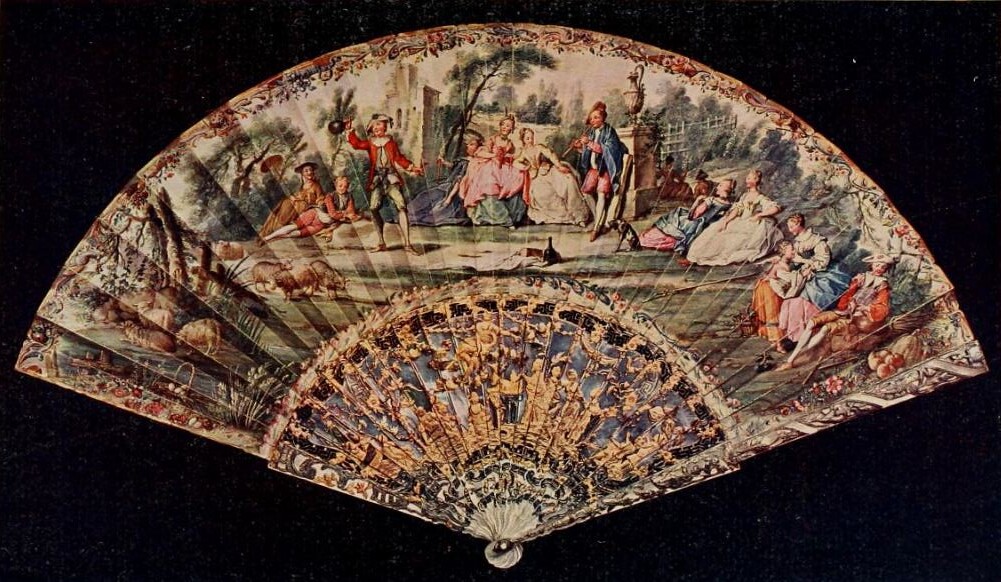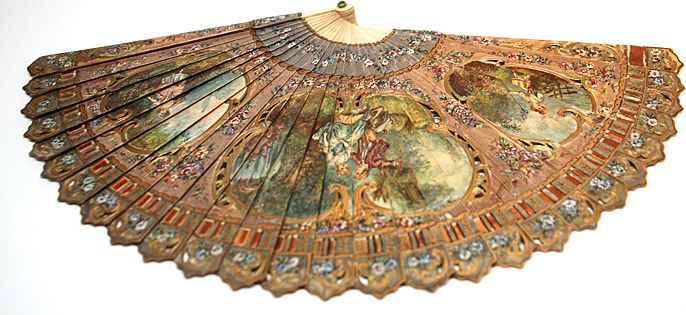Best of the Friday Fun Facts: DRAGONFLY IN AMBER

Here are this week's Friday Fun Facts about Diana Gabaldon's books. This is a collection of some of my favorite items from previous FFF posts.
As we wait for OUTLANDER Season 2, I thought it might be fun to take a closer look at DRAGONFLY IN AMBER, so this week's collection is taken entirely from that book. Hope you enjoy it!

1) Remember the scene in DRAGONFLY where Jamie and Fergus are playing with a ball-and-cup toy called a bilboquet?
Jamie was lying on the carpet in the sitting room when I came back to the house, with a small boy sitting cross-legged on the floor beside him. Jamie was holding a bilboquet in one hand, and had the other poised over one eye.I saw this in a gift shop in Colonial Williamsburg in 2008. Naturally, the moment I saw it, I decided I had to have one. It's not nearly as easy as it looks! <g> Here's a quick demo.
“Of course I can,” he was saying. “Anyday and twice on Sundays. Watch.”
Placing the hand over his eye, he fixed the other piercingly on the bilboquet and gave the ivory cup a toss. The tethered ball leaped from its socket into an arc, and dropped as though guided by radar, landing back in its cup with a snug little plop.
“See?” he said, removing the hand from his eye. He sat up and handed the cup to the boy. “Here, you try it."
(From DRAGONFLY IN AMBER by Diana Gabaldon, chapter 12, "L'Hopital des Anges". Copyright© 1992 by Diana Gabaldon. All rights reserved.)
The bilboquet shown above may not look exactly like the French version mentioned in DRAGONFLY, but the basic idea is the same. If you want to try it yourself, you can order one here.

2) This is what foxglove (Digitalis purpurea) looks like. According to Wikipedia,
The scientific name means "finger-like" and refers to the ease with which a flower of Digitalis purpurea can be fitted over a human fingertip.The entire foxglove plant is toxic, including its roots and seeds, but its medicinal benefits have been known for centuries.
The use of D. purpurea extract containing cardiac glycosides for the treatment of heart conditions was first described in the English-speaking medical literature by William Withering, in 1785....It is used to increase cardiac contractility...and as an antiarrhythmic agent to control the heart rate, particularly in the irregular (and often fast) atrial fibrillation. Digitalis is hence often prescribed for patients in atrial fibrillation, especially if they have been diagnosed with congestive heart failure.Claire treated Alex Randall with digitalis in DRAGONFLY IN AMBER, when he was dying of consumption.
I couldn’t bear the look of his chest, heaving under its impossible burden, and I gently closed his shirt and fastened the tie at the neck. One long, white hand grasped mine.For more about foxglove, look here and here.
"How long?" he said. His tone was light, almost unconcerned, displaying no more than a mild curiosity.
“I don’t know,” I said. “That’s the truth. I don’t know."
"But not long," he said, with certainty.
"No. Not long. Months perhaps, but almost surely less than a year."
"Can you...stop the coughing?"
I reached for my kit. "Yes. I can help it, at least. And the heart palpitations; I can make you a digitalin extract that will help." I found the small packet of dried foxglove leaves; it would take a little time to brew them.
(From DRAGONFLY IN AMBER by Diana Gabaldon, chapter 39, "Family Ties". Copyright© 1992 by Diana Gabaldon. All rights reserved.)

3) The fan was an important fashion accessory for upper-class ladies in the 18th century. The one above is from France, circa 1750. (Photo credit: CharmaineZoe, on Flickr. Click on the photo for a bigger view.)
"Men,” I told him, “have no notion of fashion. But not to worry. The seamstress says that’s what the fan is for.” I flipped the matching lace-trimmed fan open with a gesture that had taken fifteen minutes’ practice to perfect, and fluttered it enticingly over my bosom.
Jamie blinked meditatively at this performance, then turned to take my cloak from the wardrobe.
“Do me the one favor, Sassenach,” he said, draping the heavy velvet over my shoulders. “Take a larger fan."
(From DRAGONFLY IN AMBER by Diana Gabaldon, chapter 9, "The Splendors of Versailles". Copyright© 1992 by Diana Gabaldon. All rights reserved.)

This exquisitely detailed 18th century French fan is an example of a style called "brisé", painted scenes placed on individual ivory sticks, held together by an interlacing ribbon. (Photo credit: Paris Chateau)
Look here for some interesting information about the "language of the fan" in the 18th century. For more information about the types of fans used in the 18th century, look here.

4) Remember the skeletons that Jamie and Claire found in a cave in France, with their arms locked about one another? I was stunned to learn that there really was such a Neolithic couple, discovered in a cave in Italy in 2007 -- a full fifteen years after DRAGONFLY was published! I think the picture above is just amazing.
"There." He pointed to a spot near the cavern entrance. The rocks there were brown with dust and age, but not rusty with water and erosion, like those deeper in the cave.I asked Diana Gabaldon once on Compuserve if she had any comments about this story of the Neolithic couple found in the cave in 2007, and she said, "I saw a similar picture (though I don't recall where that particular cave was) in a National Geographic magazine, lo, these many years ago, and it stuck in my mind--as such a thing naturally would."
"That was the entrance, once," he said. "The rocks fell once before, and sealed this place." He turned back and rested a hand on the rocky outcrop that shielded the lovers from the light.
"They must have felt their way around the cave, hand in hand," I said. "Looking for a way out, in the dust and the dark."
"Aye." He rested his forehead against the stone, eyes closed. "And the light was gone, and the air failed them. And so they lay down in the dark to die." The tears made wet tracks through the dust on his cheeks. I brushed a hand beneath my own eyes, and took his free hand, carefully weaving my fingers with his.
He turned to me, wordless, and the breath rushed from him as he pulled me hard against him. Our hands groped in the dying light of the setting sun, urgent in the touch of warmth, the reassurance of flesh, reminded by the hardness of the invisible bone beneath the skin, how short life is.
(From DRAGONFLY IN AMBER by Diana Gabaldon, chapter 29, "To Grasp the Nettle". Copyright© 1992 by Diana Gabaldon. All rights reserved.)

5) Rose madder is a red pigment made from the roots of a plant called Rubia tinctorum. It has been used since ancient times to make red dyes, and in fact, rose madder was used to dye British soldiers' uniform coats from the late 17th century until about 1870.
I thought the use of it in DRAGONFLY was pretty clever:
And should any doubt remain, the madder-stained urine gave an absolutely perfect illusion of a man pissing blood as the smallpox attacked his kidneys.
“Christ!” Jamie had exclaimed, startled despite himself at the first demonstration of the herb’s efficacy.
“Oh, jolly good!” I said, peering over his shoulder at the white porcelain chamber pot and its crimson contents. “That’s better than I expected.”
(From DRAGONFLY IN AMBER by Diana Gabaldon, chapter 23, "The Best-Laid Plans of Mice and Men...". Copyright© 1992 by Diana Gabaldon. All rights reserved.)

I was surprised to learn that it is traditional in the country of Georgia to dye Easter eggs a deep blood-red color using rose madder, as shown in the photo above.
I hope you enjoyed this installment of the Best of the Friday Fun Facts! Here are the previous collections:
Best of the Friday Fun Facts: Collection #1
Best of the Friday Fun Facts: Collection #2
Best of the Friday Fun Facts: Collection #3
Best of the Friday Fun Facts: Collection #4
Best of the Friday Fun Facts: Collection #5
Best of the Friday Fun Facts: Collection #6
Best of the Friday Fun Facts: Collection #7
Best of the Friday Fun Facts: Collection #8
Best of the Friday Fun Facts: Collection #9
Best of the Friday Fun Facts: Collection #10
Best of the Friday Fun Facts: Collection #11
Best of the Friday Fun Facts: Collection #12
Look here to see all of my Friday Fun Facts blog posts.







Are you reading my mind, Karen? :-) Thanks for this! (It was what I imagined, and I even have one somewhere).